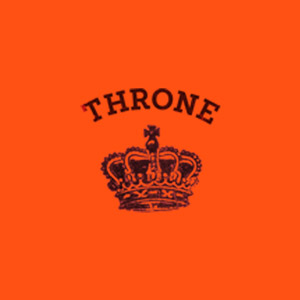I was recently asked by a friend of mine if I could make any recommendations for an affordable medical watch. “I’d love to”, I thought, without realizing that I had no idea what a medical watch was. After doing some research, I’ve found that I was really missing out on an interesting genre of watches. For those of you similarly out of the loop, medical watches are offer a quick and easy way for a physician or nurse to take an accurate reading of a patient’s pulse. The face of a medical watch features a pulse scale, either on the inside or outside of the second scale (sometimes on the outer bezel). On most models, when the second hand reaches the 12 hour marker, you begin counting heart beats. When you reach 30, see where the second has reached on the pulse scale, and you’ll find the number of heart beats per minute. Pretty simple technology, but also kind of genius. I’ve found a few really beautiful examples of these watches which I don’t think you need to be a physician to appreciate, or wear for that matter.
 This Aristo is a great example of a very well designed and wearable medical watch. It’s design is simple, even clinical. The clean white face and bright red second hand make the watch very readable, and the stainless steel case (39mm) and leather strap give it an appearance that would wear perfectly with a lab coat. Meanwhile, the the uniquely shaped hour and minute hands provide a nice design touch. One thing you’ll notice about the the Aristo is that it has two pulse scales, beginning at the 12 and 6 hour markers. This ensures that a physician will have to wait no longer than 29 seconds (probably far less) to begin taking a pulse. This also decreases the base pulse count from 30 to 15. The Aristo features a ETA 2824-2 automatic movement in a package valued at less than $500.
This Aristo is a great example of a very well designed and wearable medical watch. It’s design is simple, even clinical. The clean white face and bright red second hand make the watch very readable, and the stainless steel case (39mm) and leather strap give it an appearance that would wear perfectly with a lab coat. Meanwhile, the the uniquely shaped hour and minute hands provide a nice design touch. One thing you’ll notice about the the Aristo is that it has two pulse scales, beginning at the 12 and 6 hour markers. This ensures that a physician will have to wait no longer than 29 seconds (probably far less) to begin taking a pulse. This also decreases the base pulse count from 30 to 15. The Aristo features a ETA 2824-2 automatic movement in a package valued at less than $500.
This 1950’s Baume Mercier Medical Chronograph is an ideal mix of classic design and function. The chronograph allows for pulse measurement to be taken at any time (ie no waiting for the second hand to hit 12 or 6). But frankly, the fact that the Baume Mercier features pulse measurement is only serves to make an already gorgeous watch that much more unique.  The Baume Mercier features a 17 jewel, manual wind Landeron 51 movement, housed in a 37.5 stainless steel case and with an acrylic crystal and solid case back. The closed back is a shame, as this movement is rather attractive.
The Baume Mercier features a 17 jewel, manual wind Landeron 51 movement, housed in a 37.5 stainless steel case and with an acrylic crystal and solid case back. The closed back is a shame, as this movement is rather attractive.
Another great doctors watch I found is the Jacques Etoile Medicus. This watch is just beautiful. It features sapphire crystal on both the front and back of the 38.6mm stainless steel case, and a custom manual wind Unitas 6300 movement. Its face is certainly a bit busier than the Aristo, but maintains its legibility and elegance. I won’t say much about the looks of the Medicus, as I think it speaks for itself. Unfortunately I have been unable to find one of these for sale, though I believe it retails for approximately $2,000. For a few more pictures of the Medicus, head over to watchseller.com.
 Last but not least is this Slava medical watch, my personal favorite. Produced in Russia in the 1980’s, these watches are very rare and have a bit of a cult following. It comes in either a mechanical or quartz movement, with the mechanical being a 2428, hand-wound, 21 jewels with a quick setting button, and two mainsprings. But what I really love about this watch, and what sets it apart from others, is its character. It oozes character. The Slava’s case measures 37 x 45 mm, and the face features a raised inner bezel, black time markings contrasted by red pulse markings, and pulse measurement instructions in both Latin and Cyrillic. Like the Baume Mercier, the Slava has two pulse scales, beginning at 12 and 6. The hour and minute hands are stainless steel with black filling and the second had features a red circular tip for added readability and charm. Check out this forum post on watchuseek, with some photos of the Slava on a very attractive red leather band.
Last but not least is this Slava medical watch, my personal favorite. Produced in Russia in the 1980’s, these watches are very rare and have a bit of a cult following. It comes in either a mechanical or quartz movement, with the mechanical being a 2428, hand-wound, 21 jewels with a quick setting button, and two mainsprings. But what I really love about this watch, and what sets it apart from others, is its character. It oozes character. The Slava’s case measures 37 x 45 mm, and the face features a raised inner bezel, black time markings contrasted by red pulse markings, and pulse measurement instructions in both Latin and Cyrillic. Like the Baume Mercier, the Slava has two pulse scales, beginning at 12 and 6. The hour and minute hands are stainless steel with black filling and the second had features a red circular tip for added readability and charm. Check out this forum post on watchuseek, with some photos of the Slava on a very attractive red leather band.
There are a lot more outstanding medical watches out there, including this well-priced, ETA-powered Mido. There’s also this interesting Swiss company, St. Gallen Horology, that makes exclusively medical watches. I really do like their GMT and quartz Nightengale lines. St. Gallen also implements some unique functionalities in their watches, including three pulse scales and the ability to quickly detach the band for easy cleaning. There’s even disinfection instructions listed on the St. Gallen site. Unfortunately, I have been unable find any St. Gallen retailers.
In fact, based on my research, it seems that medical watches can be very hard to find for sale. Vintage and current models are almost completely unavailable at any U.S. retailers, and I can’t really say why this is. I suppose this could be a sign of a dying genre, but let’s hope not. As you can see in with the examples I’ve listed above, there is a lot of charm, elegance and superb design to be found in the medical watch genre.
images via chronomaster.co.uk, watchseller.com and timex.homestead.com.









 Featured Videos
Featured Videos







